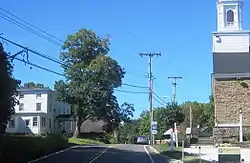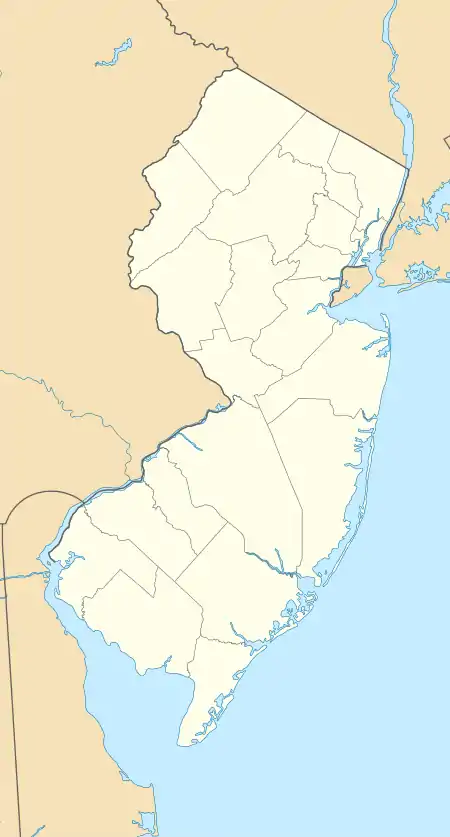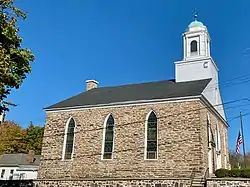Neshanic, New Jersey
Neshanic is an unincorporated community within Hillsborough Township, in Somerset County, New Jersey, United States. It is located near the South Branch Raritan River. The Neshanic Historic District was listed on the National Register of Historic Places in 1979.
Neshanic, New Jersey | |
|---|---|
 Neshanic along Amwell Road (CR 514) | |
 Neshanic, New Jersey Location within Somerset County  Neshanic, New Jersey Neshanic, New Jersey (New Jersey)  Neshanic, New Jersey Neshanic, New Jersey (the United States) | |
| Coordinates: 40°29′52″N 74°43′12″W | |
| Country | |
| State | |
| County | Somerset |
| Township | Hillsborough |
| Time zone | UTC-5 (Eastern (EST)) |
| • Summer (DST) | UTC-4 (Eastern (EDT)) |
History
The name comes from a tribe of the Raritan tribe of Lenape Native Americans who lived along the river. Community life for the Dutch farmers who settled there began around 1750 and centered on a church, a school, a grist mill and a tavern owned by John Bennett, which historians say was most instrumental in forming the village. The first mill was built by Bergen Huff around 1770 and there was also a tannery which supplied leather to the people of the village as well as to the nearby town of New Brunswick. At one time the area surrounding the Shirk farm and extending along the Sourland Mountains was the largest peach producing region in the State.
Historic district
Neshanic Historic District | |
 Neshanic Reformed Church | |
| Location | Amwell and Zion Roads |
|---|---|
| Area | 107 acres (43 ha) |
| Built | 1750 |
| Architectural style | Classical/Gothic |
| NRHP reference No. | 79001519[1] |
| NJRHP No. | 2523[2] |
| Significant dates | |
| Added to NRHP | August 1, 1979 |
| Designated NJRHP | October 10, 1978 |
The Neshanic Historic District is a historic district encompassing the village. It was added to the National Register of Historic Places on August 1, 1979 for its significance in settlement and religion. It includes 23 contributing buildings.[3]
Points of interest
Nearby Neshanic Mills was added to the NRHP in 1978. The original Mill was built in 1810 and the later rebuilt by Andrew Lane in 1876. It is also known as the Amerman Mill. It operated until the late 1940s and is now a private residence.
See also
References
- "National Register Information System – (#79001519)". National Register of Historic Places. National Park Service. November 2, 2013.
- "New Jersey and National Registers of Historic Places – Somerset County" (PDF). New Jersey Department of Environmental Protection – Historic Preservation Office. September 30, 2020. p. 8.
- February 1975, Wayne T. "National Register of Historic Places Inventory/Nomination: Neshanic Historic District". National Park Service. With accompanying 20 photos
External links
 Media related to Neshanic, New Jersey at Wikimedia Commons
Media related to Neshanic, New Jersey at Wikimedia Commons- Branchburg Rescue Squad
